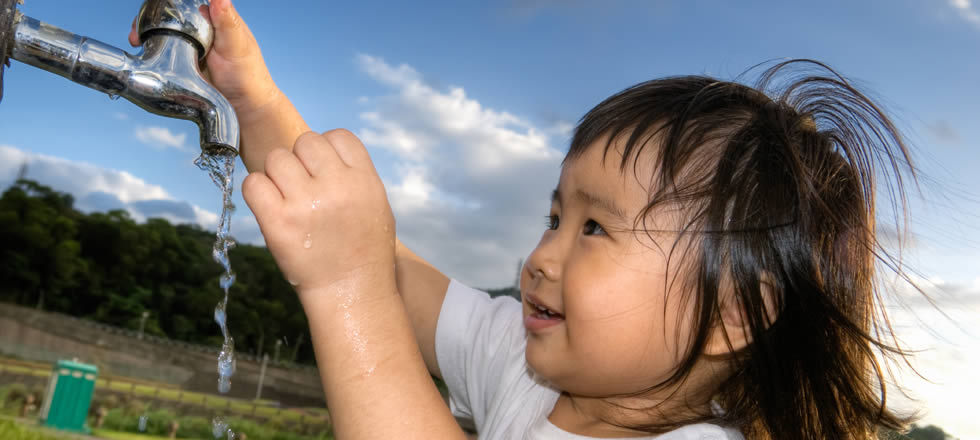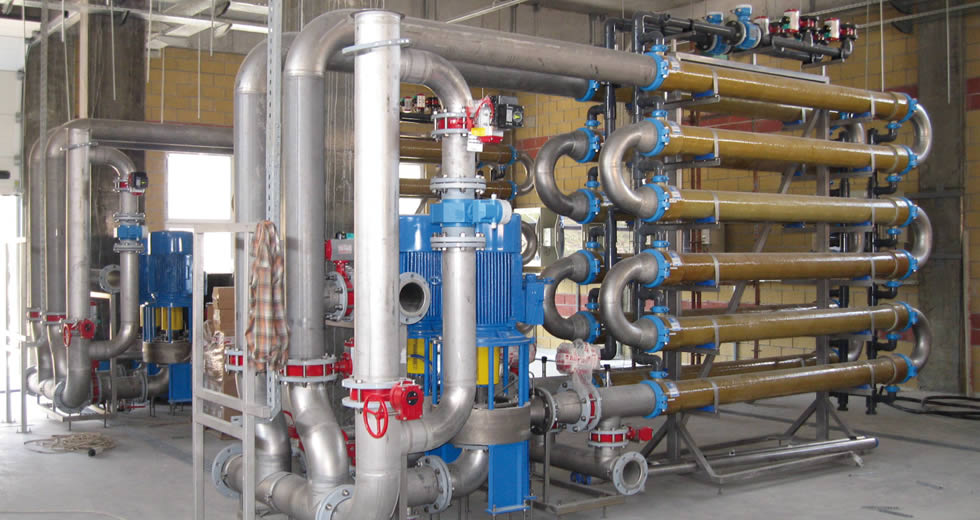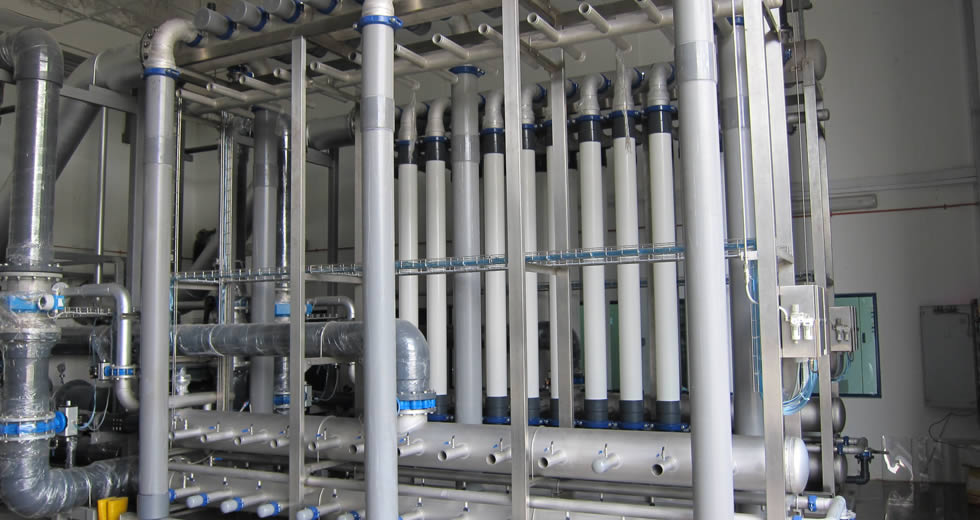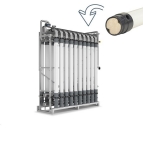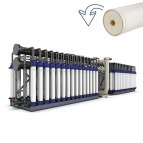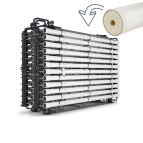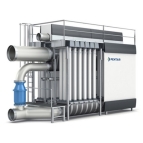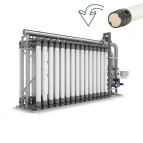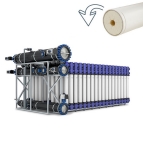CHALLENGES
Municipal water supply and wastewater treatment companies all over the world face multiple challenges. There is a need to supply more drinking water and treat more wastewater. The public demands drinking water of pristine quality, free of any pollutants. Every liter of drinking water will return as wastewater and need treatment before discharge. With fresh water sources dwindling in many regions, these challenges are compounded by the need to minimize losses and maximize recycling in the entire process of managing the water cycle.
X-Flow technologies have been developed to meet the challenges in the municipal water industry. These challenges are both quantitative as well as qualitative for potable water treatment and municipal wastewater treatment.
Quantitative challenges: meeting the need to supply more potable water and treating more wastewater with dwindling water sources.
Qualitative challenges: meeting the need for treating waters with emerging contaminants while meeting stricter usage and reclamation standards.
These challenges are compounded by the need to minimize water losses during processing while maximizing water recycling. Within this context are also usage and reclamation standards imposed by international, national and local agencies.
If you have any questions, please contact us.
APPLICATIONS
New methods of testing are being implemented that can detect minute levels of pollutants. The public demand for pristine quality drinking water, free of all pollutants, is increasing. Typically, every liter or gallon of drinking water fed into the system will return as wastewater that will require treatment before discharge. In its journey through a municipal water system, drinking water will become contaminated with all kinds of pollutants.
Pollutants can range from soap or organics, such as food waste, to emerging contaminants, such as nanoparticles and pharmaceutical residues. Rigorous environmental regulations apply to the discharge of treated wastewater to lakes, rivers and oceans.
TREATMENT SOLUTIONS
Potable water treatment
Ground water from a variety of sources, such as ground water, surface water, lake or river water or seawater can be sources for potable water treatment.
In some cases, bore holes for collection of ground water that were constructed many decades ago are constructed of bricks. When exposed to ground movement, cracks can develop which allows surface water to enter the bore holes. The traditionally clean ground water can then become contaminated with microorganisms. This is referred to as “ground water under the influence of surface water”. An alternative to shutting down the existing bore hole and constructing a new one is to use membrane technology to filter the ground water for potable water treatment. The X-Flow Xiga or Aquaflex technology can be used to filter the ground water to remove contaminants and guarantee complete removal of bacteria and viruses.Surface water contains microbiology as well as suspended solids. Sometimes dissolved organics are present that cause color in the surface water. X-Flow Xiga or Aquaflex technology can provide a reliable treatment system that eliminates the need for multiple treatment steps.
It can be enhanced by direct coagulation to provide esthetically pleasing water which is free of color. The X-Flow’s Hollow Fiber Nanofiltration technology can guarantee a chemical free removal of organics, suspended solids as well as microbiology in potable water treatment. More and more coastal communities are relying on seawater desalination for production of potable water. Reverse osmosis (RO) membranes used in desalination of seawater are extremely susceptible to fouling so the RO feed water needs to be virtually free of suspended solids and microorganisms.
Municipal wastewater treatment
Municipal wastewater treatment has to ensure that the wastewater is of good quality prior to discharge into the environment. This means that nutrients, such as organics, nitrogen, and phosphate have to be reduced to acceptable levels in municipal wastewater treatment options. If the wastewater is discharged to waters used for recreational purposes, it is also important that the water is free of microbiological contamination. X-Flow Xiga or Aquaflex membranes provide a chemical-free alternative for removal of microbiology in municipal wastewater treatment.
If a small footprint is required because of space limitations, our membrane bioreactor (MBR) membranes can replace traditional clarifiers, while minimizing the size of the activated sludge bioreactors in municipal wastewater treatment. The MBR membranes separate the sludge from the effluent and guarantee a full removal of microbiology.
Municipal wastewater treatment for reuse of reclamation
Many communities are using effluent for non-potable purposes, such as irrigation and industrial use. This decreases the demand on potable water sources, so the dwindling supplies of potable water can be put to better use.
Reuse applications in municipal wastewater treatment do require that the water is treated to a high standard, although not to that for potable water treatment. This can mean that the water has to be crystal clear (free of turbidity) or even low in mineral content. X-Flow’s Xiga and Aquaflex membranes will remove all turbidity, providing clear water. If a RO process is required to lower the mineral content of the water, the ultrafiltration will protect the RO membranes and will guarantee a long trouble free operation of the RO system.
RELATED TECHNOLOGIES
Pentair X-Flow Airlift Solution: treating low and medium strength wastewater and producing high-quality filtrate in bioreactor applications.
Pentair X-Flow Aquaflex is the ultrafiltration solution for challenging feed water qualities with unmatched operational flexibility.
Pentair X-Flow Xiga: Ideal solution for large-scale ultrafiltration applications in a small footprint.
Pentair X-Flow Airlift Megablock Solution: treating low and medium strength wastewater and producing high-quality filtrate in bioreactor applications with a small footprint.
The Pentair X-Flow Aquaflex High Solids Solution: treating challenging feed water qualities with one-step Ultrafiltration.
Pentair X-Flow X-line Solution is a cost-effective ready-to-assemble UF for water treatment and wastewater reuse applications.
